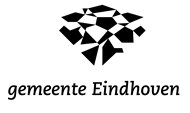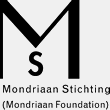Jan 25th, 2009 by Charles Esche | No Comments »
In Detroit, or more precisely Hamtramck a city state within the larger conurbation. The last two days were spent thinking around and about the idea of buying a property or investing in some appropriate way in the art systems of this city. What strikes almost everyone who comes here immediately is the unmitigated potential of the infrastructure in this place. Driving or walking round its unoccupied houses and factories, almost forces the words “but you could do so much here!†our of your month before you can stop yourself….yet stop yourself you should because, though true, it is a reaction that leaves so much unsaid and ununderstood. For while the civic authorities have been in some kind of crisis for years, people here have got used to living “off-the-grid†in ways that are smart and sustainable over time. As they say, money fled long ago so the new recession of 2008-11 is unlikely to have much effect. While residents of the Detroit suburbs might be panicking and foreclosures and empty properties rises to unheard of levels, they are still some way behind the city core itself. Hamtramck’s small-scale retail and production capitalism is already much closer to what I have experienced in Alexandria or Istanbul than to the chain store monoliths in most of the rest of the USA. It doesn’t work that well in terms of shareholder value and rising profitability - but it works enough to allow people to live without always being confronted with their own inadequate purchasing power, as is the case in poor communities in much of the USA.
But why it is then important, at least in my thinking, to avoid seeing new opportunity in every broken down neighbourhood. There are a number of reasons but I think it boils down to a sense that seeing decay as opportunity underestimates or alomost excludes what exists here already and how people are constructing “the world they want to live in†(as Stephanie Smith calls it) within the given situation. Talking to Andrew in Ann Arbor and involved with the Unreal Estate Agency helpfully asked us to see that decay and decline is also creation and growth of something else if we can reframe our expectations - for every empty lot there is another “tree of heavenâ€, to simplify it. This is an important observation and worth documenting in the way I think he plans but I am not totally sure that such organic growth is sufficiently socially engaged. It comes down again to human agency, the basis of both art and politics, and how much the collective “we†is able to shape its environment or simply respond top changes from outside. The collapse of faith in fundamentalist free market theology here allows for a new sense of this agency to emerge…and here the initiatives of our hosts Design 99 are crucial.
I want to suggest, without growing too rhetorical, that they are working on a new kind of artistic agency, in which relational art and site-specific production (even US land art traditions) are combined.In the area in and around Hamtramck, the collapse of house prices allows for a new way of shaping the urban environment with relatively modest resources. They are buying up property, generating community by inviting others to join while attentively responding to what is here. Their work has precedents in other kinds of intentional communities and projects such as Rick Lowe’s in Houston but it has a different taste, more modest, less openly artistic, crossing disciplines and often just about being in the world in this place and time. For me, it recalls some old thoughts I had around “modest proposals†as a viable artistic strategy in the post-1989 world of no new grand narratives - something that might worth reviving, I suddenly think.
An even more interesting issue for me (or us in the museum) however is if and how we as a museum and art collection should become involved in their process and practice. Some time ago, I talked about how we need to move from a collection of objects to a collection of (inter)relations - something we have begun with a turn to the archive and the museum’s own history, as well as new forms of documenting artistic practice. Design 99 set us a new challenge. To figure out how to “collect†their project (and in doing so, support it) because it seems to offer a new and more radical art form than most of the object production processes that the art market has sustained up until recently. Working out a solution to this will take some time and head stratching, but I am convinced, being here, that it is worth it. More to follow…
Posted in All Posts, Research Travels | No Comments »
Jan 9th, 2009 by Anja Sijben | No Comments »
Omaha, in Nebraska, USA
where is it located?
That’s what I thought when I was accepted at the residency Bemis in Omaha. It is really in the middle of nowhere, that’s what I thought living in Amsterdam city.
Arriving in Omaha
Exited to do a residency, I left for Omaha, via New York. The last sense of a big city, energetic live, I arrived in Omaha. The road from the airport to the Bemis didn’t give much excitement. It seemed as a quiet back side of a city. But it turned out that the whole of Omaha was abandoned on the streets. Hardly any walking person on the street. The car is their holly cow. Half a mile is too far a distance to walk. Just take the car. I also could use a car of one of the fellow artist. A truck so that was a good US experience!

Or all together in a real Lincoln!

Bike
Ok, I have to admit there where some hills in town, and even as a Dutch person, used to a flat country I had trouble crossing the first hills on my bike, provided by the Bemis centre! But after a few weeks my muscles were trained some more and I could bike nice distances. Sometimes with my fellow artist in residence which was good fun!
In other US cities it is sometimes possible to load your bike on a bus, but not in Omaha. And then the distances. The other side of the city was 23 miles (32 km). I never saw the other side.
Luckily Bemis is located in an area in development. There are the old warehouses, well kept and in restoration. Many restaurants, shops and galleries in development. People walk around on these streets. It is an exiting development. Also the farmers market in summer time on Saturday attracts people, and they enjoy sitting on the terrace afterwards.
Continue Reading »
Posted in All Posts, Other Contributors | No Comments »
Nov 16th, 2008 by Tod Seelie | No Comments »
Notes from the opening weekend of the Miss Rockaway Armada’s project as part of Heartland.
- Riding down the Dommel river in Eindhoven as dusk turned to night on one of the three boats made by some of the crew for the installation.
- Tattoo artist Brian Kelly set up shop in the printmaking studio at Stroomhuis during the opening. A handful of the crew got some new ink, myself included. One of our group didn’t have any money or anything to trade, so he offered up part of his leg to let Bryan practice with a new super-wide fill needle.
- We’ve had a really great experience here in Eindhoven, but were a bit put off by how rude some of (very drunk) guests were at the opening. From tagging on some of the paintings, to badgering one of our performers off the stage, and even one guy who was having some inappropriate-touching problems with our female crew members. We were kind of hoping Mr. Touchy-Feely would come back the second night so we could tackle and hogtie him.
- Some of the installation getting wrecked by drunken craziness on the opening night, including the giant sign from the Van Abbemuseum we had outside.
- Mike and John getting wasted and busting out some crazy freestyling for a good half an hour (see video below).
- Waking up one morning and finding a giant wok full of lobsters. They were from the night before and were all cold and fishy, but whatever. Lobster is lobster.
- Part of the installation was a small diamond cave inside a treasure chest with a huge caveman SpongeBob Squarepants. It also was a very cozy bedroom and effective hot-box.
- It’s interesting to have helped build an installation with such varied parts as: a bar, a stage, a shadow puppet screen, two crows nests, a paper chandelier, a chapel, a cave, a dragons tail, and even a merch table.
- Wrapping up the opening weekend with a movie + pizza night in the installation. We piled a bunch of cot mattresses on the floor with blankets and watched movies projected on the shadow puppet screen.It was cold in there, but everyone was all on top of each other so it was fine. Spons brought us curly fries too. And shoarma pizza kinda sucks, by the way.
(photos and videos from the opening of the Miss Rockaway Armada’s installation at Stroomhuis in Eindhoven, as part of the show Heartland at the Van Abbemuseum. Please click “Continue Reading” below to see more (including the videos), there is also a full gallery here.)



Continue Reading »
Posted in All Posts, Other Contributors | No Comments »
Nov 10th, 2008 by Tod Seelie | No Comments »
From the second half of the build at Stroomhuis by the Miss Rockaway Armada:
- I am able to convince friends of mine from Brooklyn, the band Team Robespierre, to come and play at Burgers in Eindhoven before they head to Amsterdam while touring Europe. A bunch of the Rockaway crew goes to the show and the band plays to a pretty full (although somewhat static) house.
- Andre cooking amazing dinners for us while we watch YouTube videos about stuff we’ve done.
- The separated bike lane here are one of the best parts of the Netherlands. However they cause you to let your guard down, which is partially why I almost collided head-on with a motor scooter tearing down the wrong way on the bike path.
- Going to the Election Brunch at the Van Abbemuseum and feeling a bit out of place since we couldn’t understand all the things being said about our own country and election. At the same time it was probably better we couldn’t participate, it probably helped move things along quicker.
- While I was checking out the museum’s exhibition of the “Heartland” show, I stumbled upon a video featuring my friend Dana at the Braddock, PA space talking about the artist-run space. Love the randomness.
- Did I mention how good stroop wafels are?
Below are photos from the second half of our stay in Eindhoven during the construction of our installation as part of the show “Heartland”. Please click “Continue Reading »” below the last photo to see more.





Continue Reading »
Posted in All Posts, Other Contributors | No Comments »








